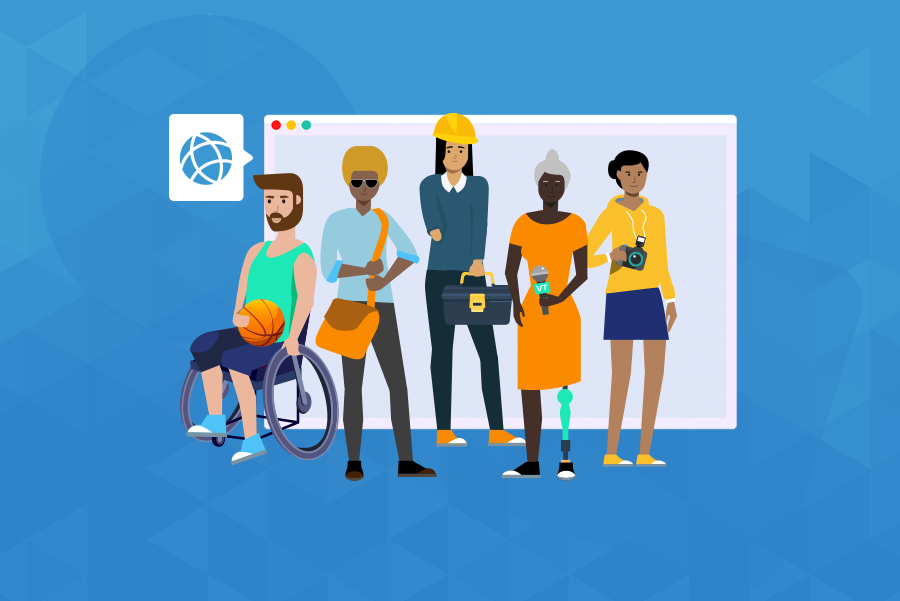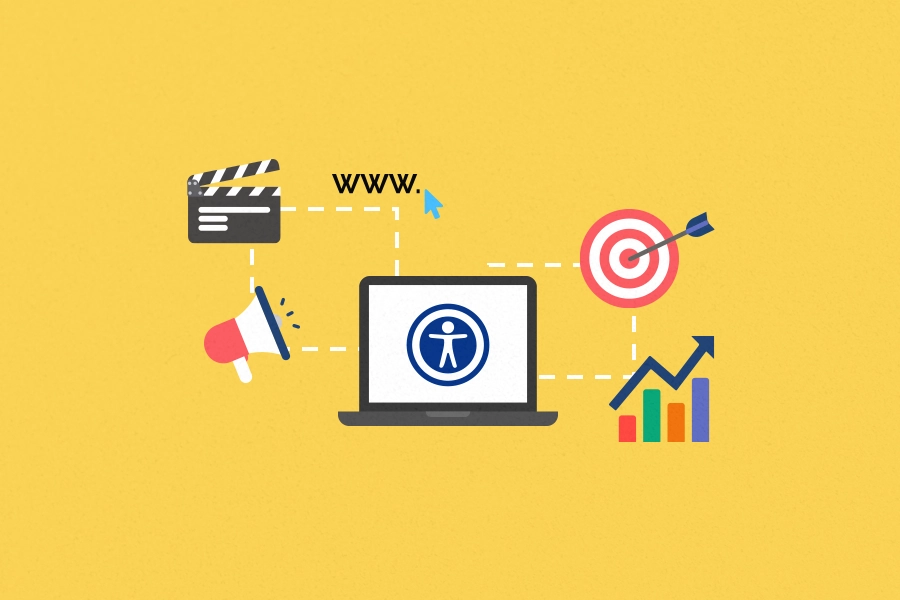
The presence of People with Disabilities in the digital world

The Fourth Industrial Revolution, a concept created by Klaus Schwab, explains the interconnectivity between technology and people. This way, the means of production also develop through the digital domain, in addition to the physical and biological. It is important to take this line of thought into account when considering the presence of People with Disabilities in the digital world.
After all, if the planet’s tendency is to integrate with technology, we have to think about access for all people. Especially in virtual navigation and its possibilities.
Therefore, this content highlights the main aspects surrounding the presence of People with Disabilities in the digital world. In addition, we discuss the importance of accessibility for them and its benefits, which contributes a lot, not only in their lives.
People with Disabilities and their consume power
Besides dealing with prejudice and difficulties of lack of access, People with Disabilities also have their purchasing power underestimated. This means that commerce, not only electronic, neglects about over 1 billion people around the world who are not considered as potential consumers.
Having your eyes closed for this part of the population results in losses not only for them. In reality, this entire contingent represents an immense loss for companies all over the world. Therefore, organizations must rethink their marketing methods if they want to reach more people.
After all, this change can be hugely significant. People with Disabilities around the world represent a consumer market the size of China, influencing over US$8 trillion in annual disposable income. Certainly they can be potential buyers for your company.
When this debate goes beyond physical stores, the distance between businesses and People with Disabilities becomes even greater in the digital world. 50% of them are more likely to face barriers to accessing digital and online services than people without any disabilities. When there are so many barriers to overcome, online shopping begins to seem less appealing.
People with Disabilities and their presence in the Web
Just as the world is spinning and increasingly using digital means, it is common to see more people with cell phones in hand, including children and the elderly. Also because access to phones and the internet has become more accessible over the years.
For these reasons, it is only natural that People with Disabilities are also more online. However, websites are not ready to receive this audience. According to a survey by WebAIM, only 2% of the world’s top one million websites offer full accessibility, providing autonomy for this audience.
This is a big problem, because 71% of customers with disabilities usually leave websites when they find them difficult to use. On top of that, they represent about 10% of total online spending. This percentage could also be much higher with investments in online accessibility.
These numbers explicitly represent why many e-commerces are still losing business opportunities. They also reinforce the importance of thinking about the presence of People with Disabilities in the digital world.
Digital accessibility: benefits of including People with Disabilities in the digital universe
Despite the high number of People with Disabilities who are virtual browsing users, this amount could be much higher. After all, with the investment in web accessibility, more people would be contemplated, and naturally, they would consume more.
For this, it is necessary that companies understand the existing barriers on the web and encourage the digital inclusion of People with Disabilities. Because, in addition to promoting a more just, inclusive and equitable society, there are several economic advantages around attracting this audience.
Did you know that globally, more than 1 billion people require some kind of assistive technology? So what are the real benefits of investing in it? Check out what they are below:
- Accessibility actions serve not only People with Disabilities, but also illiterates, the elderly and people with temporary limitations;
- Accessible websites differentiate themselves in the market and on the web (SEO improvement);
- 82% of People with Disabilities would return or spend more time on websites with digital accessibility;
- Effective communication in the delivery of information, products and the brand;
- Digital accessibility avoids legal claims, fines and more.
We are way past the time that investing in accessibility was something secondary, because we are noticing that this has become a vital factor for brands day after day. Now that you have learned about the presence of People with Disabilities on the web and understood the importance of accessibility, how about taking the first step to transform the reality of millions of people and contribute to a more accessible web?


